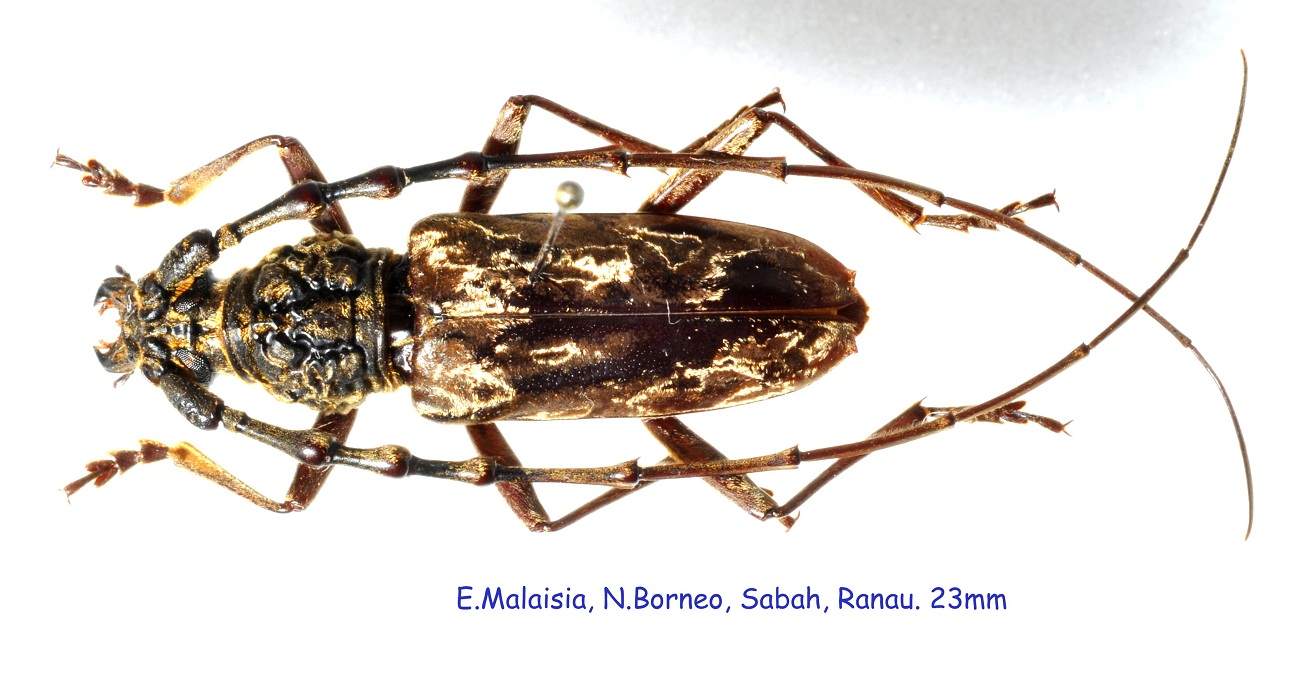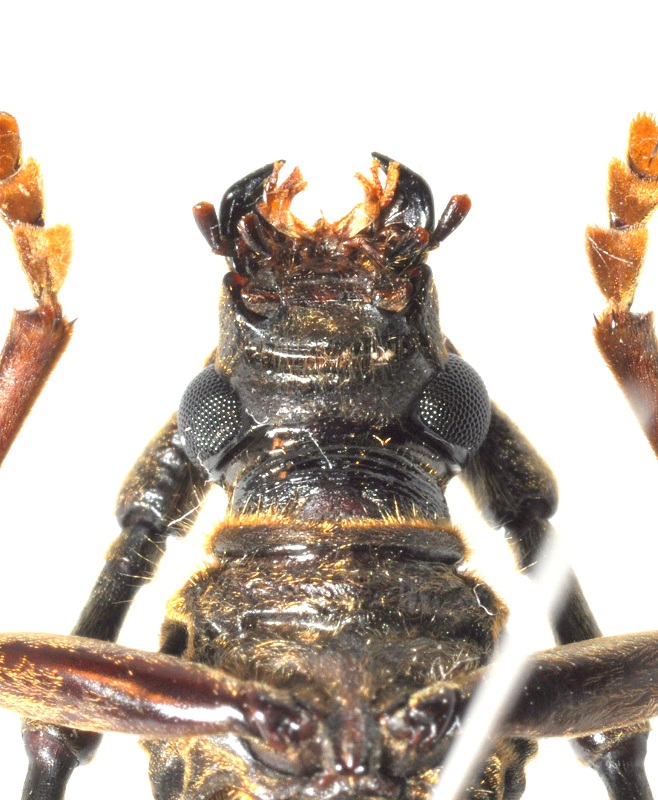| T O P I C R E V I E W |
| Pierre |
Posted - 10/01/2013 : 11:14:59
 |
| 6 L A T E S T R E P L I E S (Newest First) |
| Andre |
Posted - 13/01/2013 : 16:56:15
a small story over spec. in the museums, determined by specialist.
In the museum Budapest was a serie from 11 Ex. (Papua Neuguinea) det. as Sybra porcella (porcellus) Pascoe, 1865 (desc. from Ceram!), det by Breuning, 1952.
The det. resulted following results: 1 Ex. Sybra neopomeriana Breuning, 1939, 5 Ex. Sybra fusca Breuning, 1970, 4 Ex. Sybra spec. nov?, 1 Ex. Sybra inanis group.
From S. neopomeriana and S. fusca I have seen the HT, also from S. porcellus.
That 4 Spec. from a very different group as S. porcellus and from a Loc. far away! Det. from Dr. S. Breuning!!!
I´m sure, that many of det. Aeolesthes spec. in the museums incorrect determined is.
The HT from Aeolesthes induta is in the BMNH. I mean Aeolesthes is a good group for a revision. Not so much Spec. and certain several new. |
| dryobius |
Posted - 11/01/2013 : 12:40:29
Have you got any photos of the holotypes, especially induta?
Newman's original description is extremely short.
Hudepohl (part 2 of Philippine Cerambycide ) states that induta is finely spined endoapically on VI - VIII. And he states that the other Philippine species, A. fulgens, is without spines on the antennae. |
| Francesco |
Posted - 11/01/2013 : 09:23:42
I have got and seen many induta (including from Luzon) in Paris and in Genoa Museum.
Aeolesthes females commonly have completely spined antennae (normally, on the antennomeres V-X or VI-X according to the species).
Male have reduced spines in confront with females have. I have observed that larger males of the same species have more abundant spines; thus, the shortness and the number of spines of the antennae is a sexual (feminine) character depending on the size. In other words, small males have antennae shorter and more spined than large males have.
This specimen is fairly small (range of the species: 20-45 mm); consequently, its antennae are fairly spined.
A. aurifaber is a different and well characterized species, due to many characters, such as pronotal structure, genitals, etc. |
| dryobius |
Posted - 11/01/2013 : 04:28:41
The species in the photograph has distinct, short curved spines (teeth) at the apex of antennomeres V - VII. They are visible in the photograph, especially on # VI.
The type locality of A. induta (Newman) in Luzon (Manila). I don't have this species from Luzon, but I have a pair of Aeolesthes from Mindanao which does not have any trace of spines on the antennal segments.
From Sabah, I have seen in the last 15 years the following 5 species:
A. mariae ( a vey large species), rather rare
A. aurifaber (moderate size, but one is very large)
A. sticheri Hudepohl (small - moderate), rather rare
A. sp. #1 (like the one illustrated above) which Holzschuh said was close to aurifaber, common
A. sp. # 2 (Holzschuh says is close to holosericea)
I have not seen any A. curticornis Hudepohl, although it shows some resemblance to A. sp. # 2. I have a nice photo of the holotype.
I have not seen any A. induta from Borneo which matches the A. induta I have from the Philippines.
Several names have been synonymized under various species of Aeolesthes. Holzschuh did not put names on A. sp. 1 & 2 because he had not seen all of the types of these Aeolesthes. So, maybe A. sp.1 & 2 are new or maybe not. |
| Francesco |
Posted - 10/01/2013 : 19:29:25
In all likelihood, a male of Aeolesthes induta |
| Pierre |
Posted - 10/01/2013 : 11:15:29
 |
|
|


